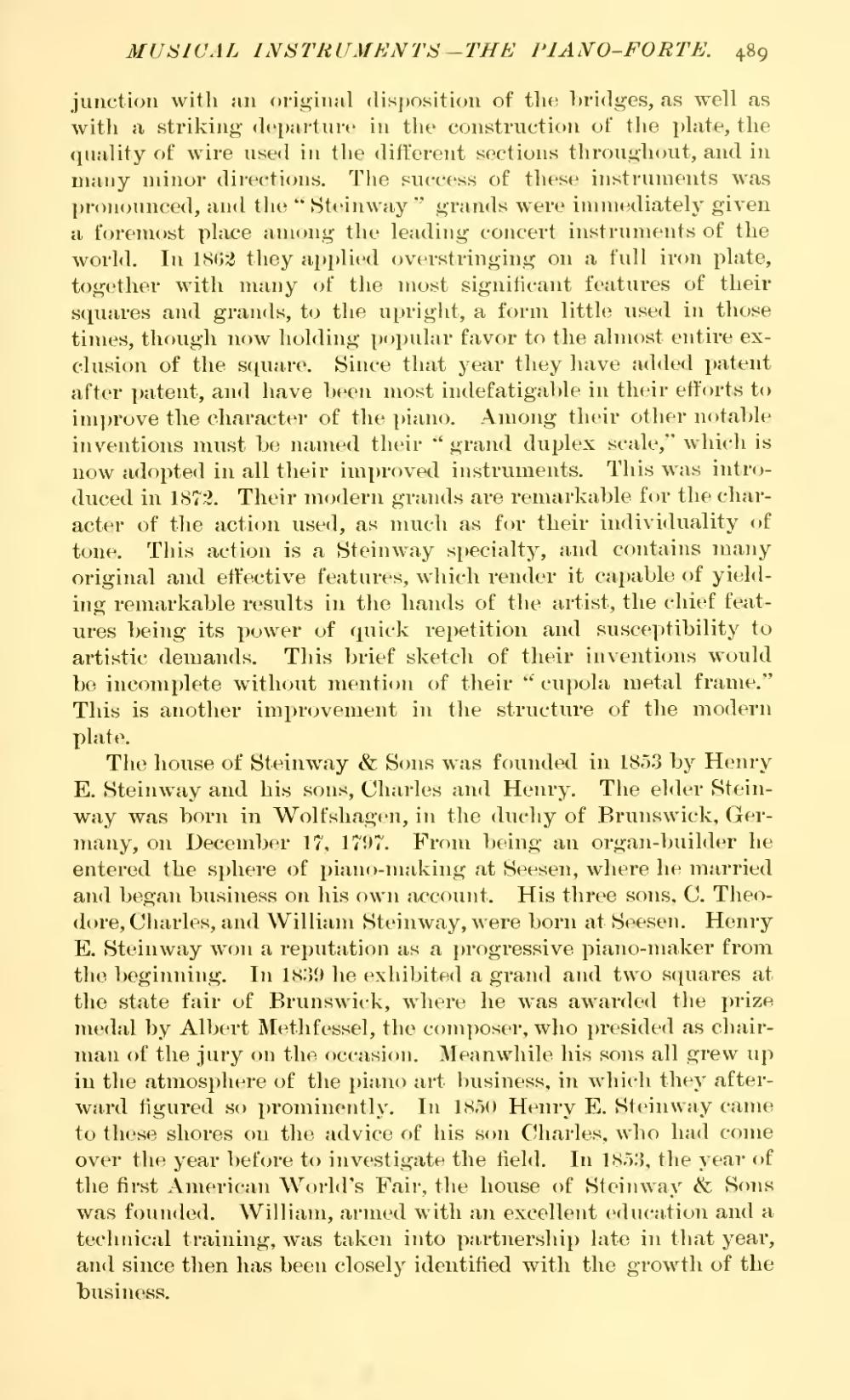junction with an original disposition of the bridges, as well as with a striking departure in the construction of the plate, the quality of wire used in the different sections throughout, and in many minor directions. The success of these instruments was pronounced, and the "Steinway" grands were immediately given a foremost place among the leading concert instruments of the world. In 1863 they applied overstringing on a full iron plate, together with many of the most significant features of their squares and grands, to the upright, a form little used in those times, though now holding popular favor to the almost entire exclusion of the square. Since that year they have added patent after patent, and have been most indefatigable in their efforts to improve the character of the piano. Among their other notable inventions must be named their "grand duplex scale," which is now adopted in all their improved instruments. This was introduced in 1872. Their modern grands are remarkable for the character of the action used, as much as for their individuality of tone. This action is a Steinway specialty, and contains many original and effective features, which render it capable of yielding remarkable results in the hands of the artist, the chief features being its power of quick repetition and susceptibility to artistic demands. This brief sketch of their inventions would be incomplete without mention of their "cupola metal frame." This is another improvement in the structure of the modern plate.
The house of Steinway & Sons was founded in 1853 by Henry E. Steinway and his sons, Charles and Henry. The elder Steinway was born in Wolfshagen, in the duchy of Brunswick, Germany, on December 17, 1797. From being an organ-builder he entered the sphere of piano-making at Seesen, where he married and began business on his own account. His three sons, C Theodore, Charles, and William Steinway, were born at Seesen. Henry E. Steinway won a reputation as a progressive piano-maker from the beginning. In 1839 he exhibited a grand and two squares at the state fair of Brunswick, where he was awarded the prize medal by Albert Methfessel, the composer, who presided as chairman of the jury on the occasion. Meanwhile his sons all grew up in the atmosphere of the piano art business, in which they afterward figured so prominently. In 1850 Henry E, Steinway came to these shores on the advice of his son Charles, who had come over the year before to investigate the field. In 1853, the year of the first American World's Fair, the house of Steinway & Sons was founded. William, armed with an excellent education and a technical training, was taken into partnership late in that year, and since then has been closely identified with the growth of the business.
